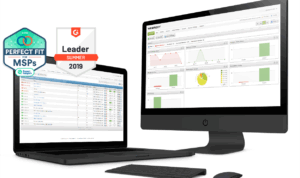Best contract management software is essential for organizations seeking to streamline their processes and improve efficiency. In today’s fast-paced business environment, managing contracts effectively can make a significant difference in maintaining compliance and maximizing profitability. This software not only simplifies the entire contract lifecycle but also provides valuable insights through data analytics, ensuring informed decision-making.
Numerous organizations have started to realize the advantages of implementing contract management solutions. These tools help in tracking deadlines, managing renewals, and ensuring that all stakeholders are on the same page. By automating routine tasks, businesses can focus on more strategic initiatives, ultimately enhancing their bottom line.
The landscape of education has undergone a profound transformation over the past few decades, primarily fueled by the rapid advancement of technology. From digital classrooms to online resources, technology has revolutionized the way students and educators interact, learn, and teach. This article delves into the multifaceted impact of technology on modern education, highlighting both the advantages and challenges it poses.
1. Enhanced Learning Experiences
One of the most significant benefits of technology in education is the enhancement of learning experiences. Interactive tools such as smartboards, educational software, and multimedia presentations make learning more engaging for students. These tools cater to different learning styles, allowing visual, auditory, and kinesthetic learners to absorb information more effectively. For instance, an interactive simulation of a scientific experiment can provide students with a hands-on learning experience that would be difficult to achieve in a traditional classroom setting.
2. Access to Information
In the digital age, access to information has become virtually limitless. Students can access a wealth of knowledge online, ranging from academic journals and articles to educational videos and forums. This abundance of resources encourages independent research and critical thinking, as students can explore topics beyond their textbooks. Furthermore, the internet has made it possible for learners from remote or underserved areas to access quality educational materials, leveling the playing field in education.

3. Online Learning and Flexibility
The rise of online learning platforms has introduced unparalleled flexibility into education. Students can now learn at their own pace, choosing when and where to study. This is particularly beneficial for adult learners or those balancing education with work or family commitments. Online courses offer opportunities for personalized learning experiences, where students can revisit lectures and materials as needed. Additionally, the COVID-19 pandemic accelerated the adoption of online learning, prompting educational institutions to adapt quickly to remote teaching methods.
4. Collaboration and Communication
Technology has also transformed the way students collaborate and communicate with one another and with educators. Tools like discussion forums, group chats, and collaborative document editing allow for seamless interaction and teamwork, regardless of geographical barriers. This shift fosters a sense of community among students, encouraging them to share ideas and work together on projects. Moreover, educators can provide timely feedback through digital platforms, enhancing the learning experience.
5. Data-Driven Insights
Another significant advantage of technology in education is the ability to collect and analyze data. Educators can track student performance through assessment tools and learning management systems, gaining insights into individual strengths and weaknesses. This data-driven approach enables personalized learning, allowing teachers to tailor their instruction and interventions to meet the specific needs of each student. Consequently, this can lead to improved educational outcomes and higher student engagement.
6. Challenges and Concerns
Despite the numerous benefits of technology in education, several challenges and concerns persist. One major issue is the digital divide, where students from lower socioeconomic backgrounds may lack access to necessary technology and internet connectivity. This disparity can lead to inequalities in educational opportunities, exacerbating existing social inequalities. Addressing this issue requires concerted efforts from policymakers and educational institutions to ensure that all students have access to the tools and resources they need to succeed.
7. Distraction and Over-Reliance
Another concern is the potential for distraction in technology-enhanced learning environments. With the availability of social media, games, and other non-educational content, students may find it challenging to stay focused during lessons. Additionally, there is a risk of over-reliance on technology, where students may struggle to develop critical thinking and problem-solving skills without the aid of digital tools. Striking a balance between technology use and traditional learning methods is essential for fostering a well-rounded education.
8. Teacher Training and Adaptation
For technology to be effectively integrated into education, educators must be adequately trained and supported. Many teachers may feel overwhelmed by the rapid pace of technological change and may lack the skills to utilize new tools effectively. Professional development programs and ongoing training opportunities are crucial for helping teachers adapt to new technologies and incorporate them into their teaching practices.
By investing in teacher training, educational institutions can ensure that educators are well-equipped to navigate the digital landscape.

9. Future Trends in Educational Technology
Looking ahead, several trends are poised to shape the future of technology in education. Artificial intelligence (AI) and machine learning are increasingly being used to personalize learning experiences, providing tailored content and recommendations based on individual student performance. Additionally, virtual and augmented reality (VR and AR) technologies offer immersive learning experiences, allowing students to explore complex concepts in engaging ways.
As technology continues to evolve, the potential for innovative educational tools will only expand, further transforming the educational landscape.
10. Conclusion
In conclusion, technology has undeniably transformed modern education, providing enhanced learning experiences, increased access to information, and greater flexibility. However, it also presents challenges that must be addressed to ensure equitable educational opportunities for all students. By embracing the benefits of technology while mitigating its drawbacks, educators can create dynamic learning environments that prepare students for success in an increasingly digital world.
FAQ Guide
What features should I look for in contract management software?
Look for features like automated reminders, document storage, version control, collaboration tools, and analytics reporting to ensure effective contract management.
Is cloud-based contract management software more beneficial?
Yes, cloud-based software offers accessibility, scalability, and easier collaboration compared to traditional desktop solutions, making it ideal for remote teams.

Can contract management software integrate with other business tools?
Most modern contract management software is designed to integrate seamlessly with other business tools such as CRM and ERP systems, enhancing overall functionality.
How does contract management software enhance compliance?
It helps ensure compliance by providing templates, tracking deadlines, and maintaining a centralized repository for all contracts, making audits easier and more efficient.
Is training required to use contract management software?
While many platforms are user-friendly, some training may be beneficial, especially to fully leverage advanced features and integrations.


































